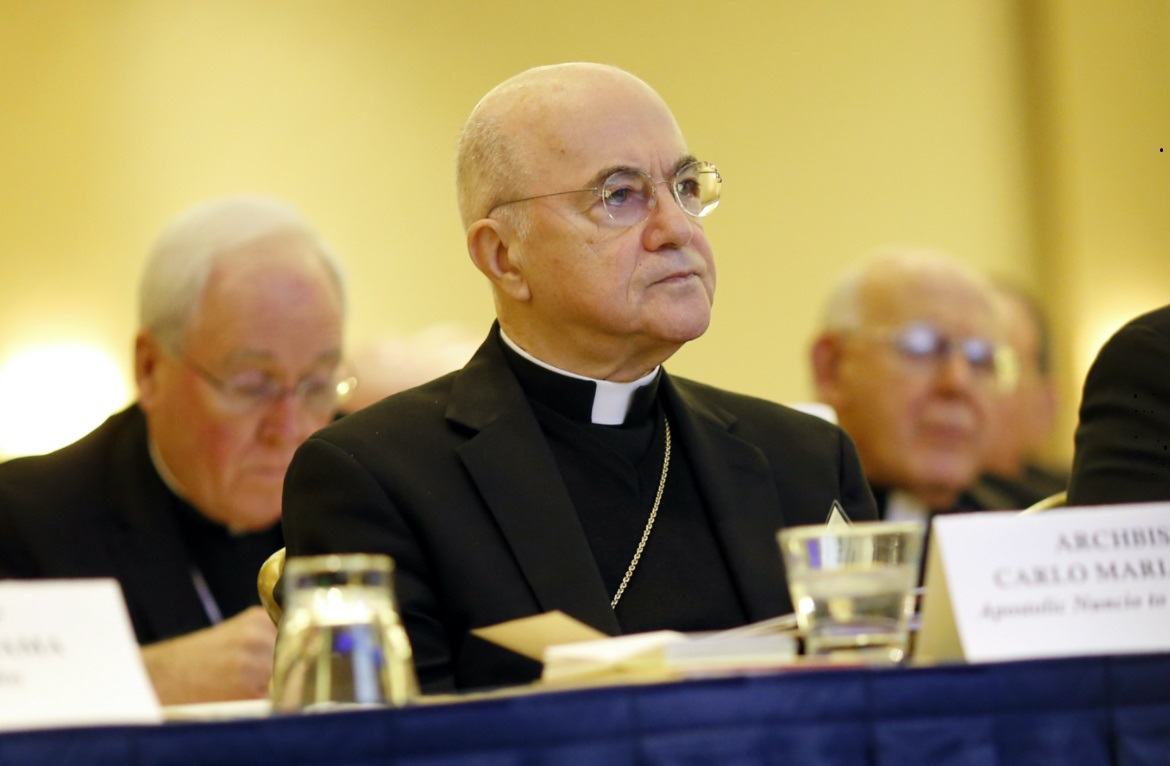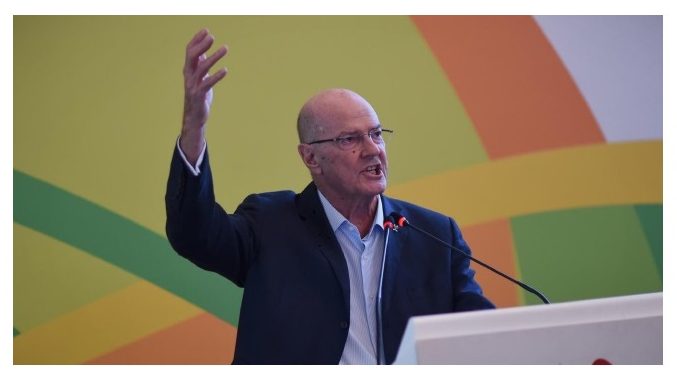‘I hope there won’t be a split,’ Pope Francis said to the Vatican press corps, ‘but I’m not scared.’
Since then, a central concern of Francis‘ pontificate has been the possibility of a formal break-up of Catholics who hold dissident views from the church or the emergence of a rival religion.
Catholics who identify as both progressive and conservative have openly questioned the legitimacy of the Pope and the Vatican, making overt or covert allusions to an irreversible rift within the church.
Both conservative and progressive Catholics have openly questioned the legitimacy of the Pope and the Vatican, raising red flags or dropping hints that the church may be irreversibly split.
Read Also: Just in: Tinubu makes a state visit to the Netherlands
In recent times, the Pope has taken action against his conservative opponents. He excommunicated Archbishop Carlo Maria Viganò, the former US papal nuncio, for the crime of schism, removed Cardinal Raymond Burke,
the unofficial head of the conservative right, from his position at the Vatican, and removed Bishop Joseph Strickland from his Tyler, Texas, seat due to his anti-Francis agitation, primarily on social media.
The Pope has gone too far in accommodating the church with contemporary social tendencies, according to these and other conservatives, by welcoming women who aspire to positions of leadership.
Roles, the LGBTQ+ faithful, limiting the recitation of the Old Latin Mass, and allowing Beijing’s influence on China’s churches.
On the other hand, liberal Catholics argue that Francis hasn’t gone far enough in fostering responsibility and inclusivity inside the church. They want him to do more to address the problem of clergy sexual abuse as well as let women to be deacons and bless same-sex couples.
These problems are the driving force behind the German church’s Synodal Path, an extensive movement that aims to counter the public’s secularization with progressive, mainly unapproved reforms.
Since the Great Schism of 1054, which split Eastern Orthodoxy and Roman Catholicism until the Protestant Reformation split the Western church in the sixteenth century, schism has existed in the church. sixteenth century. The traditionalist Society of St.
Pius X was the most recent group to split, having been established in 1970 by the French Archbishop Marcel Lefebvre, who was excommunicated for consecrating his own bishops and rejecting the decisions made by the Second Vatican Council.
The one that is believed to have provoked a split most similar to this is Viganò. Viganò released a scathing letter in 2019 that called for the resignation of former Cardinal Theodore McCarrick and accused the Pope of covering up the abuse of minors.
This came as Francis was addressing the catastrophic fallout from the clerical abuse epidemic in Ireland. Since then, he has approached conspiratorial and radical ideologies, labeling Francis as ‘a heretic’ and a ‘tyrant’ and criticizing the Second Vatican Council’s reforms side chapels.

Almost an hour’s drive from Rome, Viganò established himself at the hermitage of St. Antonio alla Palanzana, where he attracted a group of disgruntled Catholics, including reactionary priests, wealthy Italian aristocrats, and nuns who had been expelled.
He founded Exsurge Domine with the intention of providing aid and funding to clergy members who allege they have been persecuted for their orthodox beliefs.
However, analysts note that Francis has deftly addressed detractors on both sides by acting only when necessary and providing documentation that explains some of his most contentious statements.
The philosopher Massimo Borghesi, who authored Catholic Discordance: Neoconservatism vs. the Field Hospital Church of Pope Francis in 2022, can no longer be regarded as a spokesperson for the conservative opposition to the pope.
Borghesi said to Religion News Service on Monday, ‘I don’t think that Viganò’s excommunication implies a schism.’
He acknowledged that there may still be a small percentage of traditionalists who feel that the church in Rome has abandoned the church’s traditions after the Second Vatican Council, but he noted that his support base in the United States has grown to the greatest extent.
Borghese stated, ‘I don’t think this interests the majority of the American church.’
A three-quarters majority of US Catholics hold a positive opinion of the Pope, according to a Pew Research Center survey conducted in April 2022.
Almost nine out of ten Catholic Democrats favor Francis, despite the fact that the political polarization of the nation influences their opinions. Conservative Catholics acknowledge that the Pope’s election was lawful, even if they disagree with his policies, according to Borghesi, in contrast to 63% of Republican faithful.
‘The schism’s prerequisites aren’t met. They’re just waiting for the next pope,’ he remarked.
Francis could have caused a more profound rift, according to Borghesi, if he had pursued the archbishop in 2019 or 2020. Rather, he gave room for conflicts to subside and for the majority of his changes to become part of the fabric of church life.
Meanwhile, following the Vatican’s ruling in early July, Viganó’s increasingly extreme views have caused him to lose the allegiance of his most ardent American supporters.
‘Within the church, these procedures have allowed for greater clarity and have cooled spirits,’ he stated.
In a similar vein, Vatican According to chroniclers, the German church’s Synodal Path has backed off from its most extreme stances, and Francis has weathered the most serious danger from the left.
Due to the Synodal Path’s dangerous schism-prone denial of official Catholic doctrine, German theologian Katharina Westerhorstmann stated in 2022 that she was leaving the synodal commission on relationships and sexuality.
Westerhorstmann stated, ‘I think there were some conversations that went too far, particularly the idea that they appeared to have already decided where this was going and that those opinions whatever didn’t fall into that category shouldn’t be taken into consideration.
Along with some theologians, she felt that although changes were required to guarantee the protection of children and vulnerable individuals inside the church, some theological elements should continue to be the same.
While a schism was undoubtedly possible between 2020 and 2021, according to Westerhorstmann, RNS was informed that, despite a resurgence last year when German priests started baptizing same-sex couples against Rome’s prohibition, that is no longer the case.
The talks with the Vatican appear to be moving forward at this time. ‘At this point, it appears that the talks with the Vatican are proceeding smoothly; perhaps there is greater transparency on both ends,” the spokesperson stated. ‘In fact, I believe that there is absolutely no longer any danger of a schism in the German church.’
Now, both extremes await the next conclave and the new pope, at which point the fate of the Catholic Church will be determined once more.
According to Viztadaily News some observers, indifference rather than fervent disagreement poses the biggest threat to the church in the modern era.
The Right Hand of the Lord Is Exalted: A History of Catholic Traditionalism from Vatican II to Traditionis Custodes author Aurelio Porfiri cautioned that although a full-blown schism is unlikely, a different form of split is already under process.
In certain Catholic communities, however, Simply put, conservatives are leaving the church, according to Porfiri.
‘I see this as a schism of indifference, where some Catholics are quitting the church not because they disagree with a specific doctrine or issue but rather because they are disengaged.’



